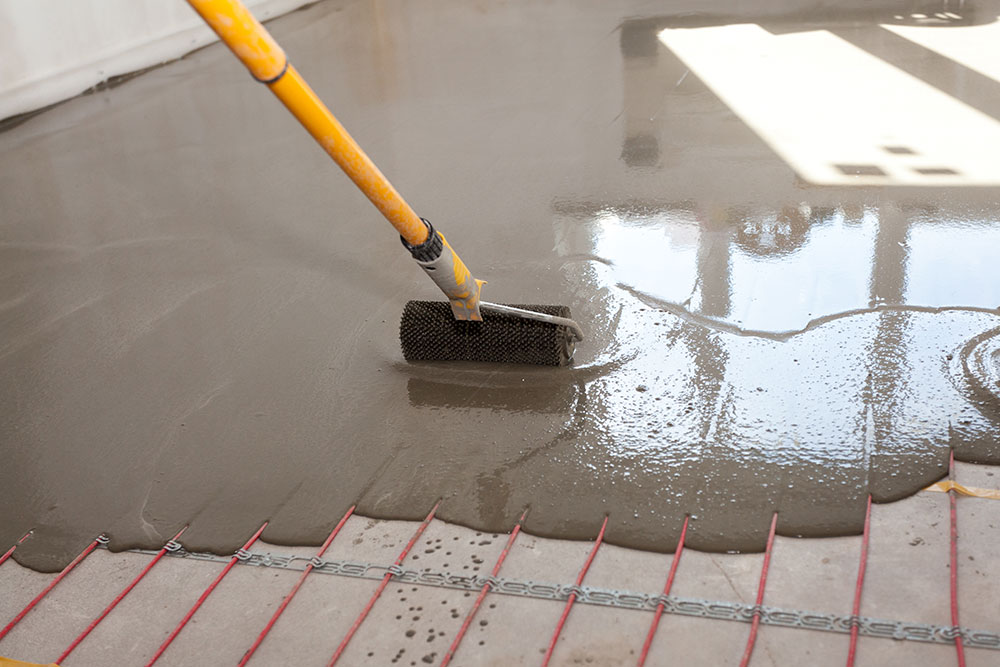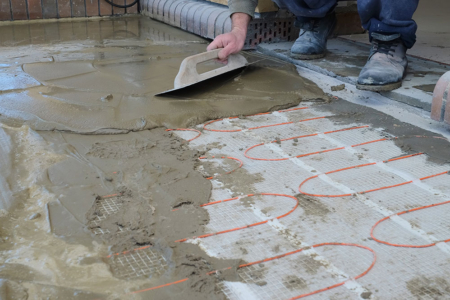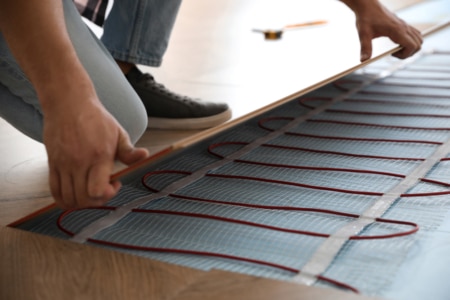Underfloor heating is becoming an increasingly popular commodity for both commercial and domestic use.
Underfloor heating is a great way to heat a space where, either aesthetically or practically, radiators are not the preferred option. Examples include commercial corridors where people are moving equipment which can bang into them if there is limited space, or in conservatories with floor to ceiling windows which leave little space for mounting. Underfloor heating also warms the whole room gently from the floor up, making it feel warmer at lower air temperatures, whilst radiators create hot and cold spots due to the localised heat source.
Electric underfloor heating systems are ideal for upgrading your heating as they are much thinner than piped hot water systems which would potentially raise the floor level by several centimetres due to their much greater size. Electric systems are also much less expensive to install as they can simply be wired into the mains rather than needing a whole new boiler.
Electric Underfloor Heating Loose Wire Explained
By Stephen Holt, Technical Manager since 1996

What is Loose Wire Underfloor Heating?
There are two main types of electric underfloor heating, heating ‘mats’ and loose wires. Heating mats are made by pre-fixing the heating cable onto a mesh mat which is rolled out across the floor. These mats are around 1m wide and are of fixed lengths and are great for rectangular spaces. Loose wire is a reel of heating cable that is laid out across the floor and fixed in place by either taping it down or clipping it into spacer bars prefixed to the floor. Both of these are then covered with screed before the floor finish is placed on top. The spacing of the loose wires determines the heating power created per square metre of floor.
Why is Loose Wire Used for Electric Underfloor Heating Systems?
Loose wire can be laid out to fill a floor in an irregularly shaped room much more easily than mats. You can even get more adventurous and vary the spacing of the loose wire heating cable to increase or reduce the heating in specific areas of the room, although this should only be done under expert guidance.
Heating mats are much quicker to install but the flexibility of using loose wire heating cable to fit around the shape of the room can make it an attractive option.
What Type of Cable Can be Used for Electric Underfloor Heating?
There are two types of cable used for electric underfloor heating wire: single conductor and twin conductor. Single conductor cables have to be laid out so that both ends return to the terminal point in a loop to make the electric circuit. In twin conductor cables, the two conductors are connected to the electrical feed at one end and they are then jointed together at the far end to complete the circuit. Twin conductor cables can be easier to lay as you do not have to work out how to get the cable back to the terminal point without crossing over the outgoing cable.
What Type of Conductor Can be Used for Electric Underfloor Heating?
The metallic resistance-alloy conductors in the centre of the cable convert electrical energy to heat when an electric current passes through them by the process of Joule Heating. The conductors have a fixed resistance which is matched to the cable power output and the length they are used in. To obtain the range of resistances required, the full range of resistance alloys is used, from resistance Copper, Copper-Nickel alloys, Nickel-Iron alloys, Nickel-Chromium alloys to the highest-resistance Iron-Chromium-Aluminium alloys.
The conductors themselves can be either solid wires or concentrically-stranded wires. Solid wires are the easiest to work with as they are the most compact, easiest to insulate and easiest to terminate . However, stranded wires have a longer lifespan as they cope with the heat stresses of warming and cooling better. Flexibility of the conductor is not such an issue when selecting its construction as the heating cable is made up of multiple layers of insulation and sheathing and also includes a metallic braid for electrical and mechanical safety. These additional layers have a much greater impact on the flexibility of the cable than the electrical conductors inside it.
If you need help selecting conductors for underfloor heating cables, please contact the Scott Precision Wire Customer Services Team who have the experience and product knowledge to provide the right solution for your cable.

